Showing Spotlights 57 - 64 of 77 in category All (newest first):
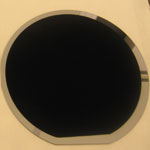 A key hurdle in realizing high-efficiency, cost-effective solar energy technology is the low efficiency of current power cells. In order to achieve maximum efficiency when converting solar power into electricity, ideally you need a solar panel that can absorb nearly every single photon of light - across the entire spectrum of sunlight and regardless of the sun's position in the sky. One way to achieve suppression of sunlight's reflection over a broad spectral range is by using nanotextured surfaces that form a graded transition of the refractive index from air to the substrate. Researchers in Finland have now demonstrated a scalable, high-throughput fabrication method for such non-reflecting nanostructured surfaces.
A key hurdle in realizing high-efficiency, cost-effective solar energy technology is the low efficiency of current power cells. In order to achieve maximum efficiency when converting solar power into electricity, ideally you need a solar panel that can absorb nearly every single photon of light - across the entire spectrum of sunlight and regardless of the sun's position in the sky. One way to achieve suppression of sunlight's reflection over a broad spectral range is by using nanotextured surfaces that form a graded transition of the refractive index from air to the substrate. Researchers in Finland have now demonstrated a scalable, high-throughput fabrication method for such non-reflecting nanostructured surfaces.
Jan 5th, 2011
 Spin coating has been the dominant fabrication method for polymer electronics. However, it is not a high-throughput process and numerous research groups are trying to find a scalable fabrication method for polymer solar cells. One such method, spray coating, is capable of delivering large-area, uniform polymer thin films through a relatively simple process, while offering ample processing possibilities of engineering the film structure. Spray-coating is a high-rate, large-area deposition technique that ensures an ideal coating on a variety of surfaces with different morphologies and topographies. It is frequently used for industrial coating and in-line deposition processes. In spray-coating systems, the ink is atomized at the nozzle by pressure or ultrasound and then directed toward the substrate by a gas. An added advantage of spray-coating is that it is efficient: compared to other techniques only a small amount of the solutions are wasted.
Spin coating has been the dominant fabrication method for polymer electronics. However, it is not a high-throughput process and numerous research groups are trying to find a scalable fabrication method for polymer solar cells. One such method, spray coating, is capable of delivering large-area, uniform polymer thin films through a relatively simple process, while offering ample processing possibilities of engineering the film structure. Spray-coating is a high-rate, large-area deposition technique that ensures an ideal coating on a variety of surfaces with different morphologies and topographies. It is frequently used for industrial coating and in-line deposition processes. In spray-coating systems, the ink is atomized at the nozzle by pressure or ultrasound and then directed toward the substrate by a gas. An added advantage of spray-coating is that it is efficient: compared to other techniques only a small amount of the solutions are wasted.
Aug 13th, 2010
 Solar cells that convert sunlight to electric power traditionally have been dominated by solid state junction devices, often made of silicon wafers. Thanks to nanotechnology, this silicon-based production technology has been challenged by the development of a new generation of solar cells based on thin film materials, nanocrystalline materials and conducting polymeric films. These offer the prospects of cheaper materials, higher efficiency and flexible features. Thanks to a highly efficient polymer solar cell fabrication method by a novel coating process - roller painting - even the mass production of polymer solar cells is now within reach. A particular advantage of roller painting compared to other coating processes is ease of control of the film thickness and uniformity.
Solar cells that convert sunlight to electric power traditionally have been dominated by solid state junction devices, often made of silicon wafers. Thanks to nanotechnology, this silicon-based production technology has been challenged by the development of a new generation of solar cells based on thin film materials, nanocrystalline materials and conducting polymeric films. These offer the prospects of cheaper materials, higher efficiency and flexible features. Thanks to a highly efficient polymer solar cell fabrication method by a novel coating process - roller painting - even the mass production of polymer solar cells is now within reach. A particular advantage of roller painting compared to other coating processes is ease of control of the film thickness and uniformity.
Aug 4th, 2010
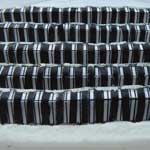 Previous studies have revealed that single-walled carbon nanotubes (SWCNTs) strongly absorb light, especially in the near-infrared region, and convert it into heat. There even has been a report that fluffy SWCNTs can burst into flames when exposed to a camera flash, which means the local temperature has reached 600-700C. This effect has already been used to develop effective CNT-based cancer killers or extremely dark materials. In a new twist, researchers in China have now discovered that SWCNT buckypapers have a large Seebeck coefficient, indicating a strong capability to convert heat into electricity. Based on this, they have designed an opto-electronic power source which converts the incident light into electricity. While this has been discussed as a theoretical mechanism, the team at Tsinghua University in Beijing has actually fabricated an integrated device that outputs a macroscopic voltage, moving forward towards practical applications.
Previous studies have revealed that single-walled carbon nanotubes (SWCNTs) strongly absorb light, especially in the near-infrared region, and convert it into heat. There even has been a report that fluffy SWCNTs can burst into flames when exposed to a camera flash, which means the local temperature has reached 600-700C. This effect has already been used to develop effective CNT-based cancer killers or extremely dark materials. In a new twist, researchers in China have now discovered that SWCNT buckypapers have a large Seebeck coefficient, indicating a strong capability to convert heat into electricity. Based on this, they have designed an opto-electronic power source which converts the incident light into electricity. While this has been discussed as a theoretical mechanism, the team at Tsinghua University in Beijing has actually fabricated an integrated device that outputs a macroscopic voltage, moving forward towards practical applications.
Jul 29th, 2010
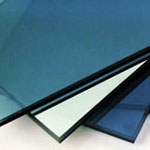 'Smart' windows, or smart glass, refers to glass technology that includes electrochromic devices, suspended particle devices, micro-blinds and liquid crystal devices. Their major feature is that they can control the amount of light passing through the glass and increase energy efficiency of the room by reducing costs for heating or air-conditioning. In the case of self-powered smart windows the glass even generates the energy needed to electrically switch its transparency. A new type of smart window proposed by researchers in The Netherlands makes use of a luminescent dye-doped liquid-crystal solution sandwiched in between electrically conductive plates as an energy-generating window.
'Smart' windows, or smart glass, refers to glass technology that includes electrochromic devices, suspended particle devices, micro-blinds and liquid crystal devices. Their major feature is that they can control the amount of light passing through the glass and increase energy efficiency of the room by reducing costs for heating or air-conditioning. In the case of self-powered smart windows the glass even generates the energy needed to electrically switch its transparency. A new type of smart window proposed by researchers in The Netherlands makes use of a luminescent dye-doped liquid-crystal solution sandwiched in between electrically conductive plates as an energy-generating window.
May 12th, 2010
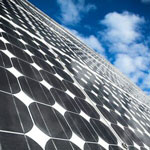 Graphene is being explored, among many other uses, as a replacement material for silicon in photonic devices to expand the wavelength range of operation and to improve performance. Another area where graphene potentially could replace silicon and could have a huge impact is as light-absorbing material in solar cells. Although it has been well known that graphene has very attractive properties for photovoltaic applications - tunable bandgap and large optical absorptivity - these advantages could not be exploited so far due to the problem of fabricating solution-processable, stable, and large enough, size-controllable graphene structures useful for charge collection in solar cells. Graphene quantum dots might offer a solution to these fabrication problems.
Graphene is being explored, among many other uses, as a replacement material for silicon in photonic devices to expand the wavelength range of operation and to improve performance. Another area where graphene potentially could replace silicon and could have a huge impact is as light-absorbing material in solar cells. Although it has been well known that graphene has very attractive properties for photovoltaic applications - tunable bandgap and large optical absorptivity - these advantages could not be exploited so far due to the problem of fabricating solution-processable, stable, and large enough, size-controllable graphene structures useful for charge collection in solar cells. Graphene quantum dots might offer a solution to these fabrication problems.
Apr 14th, 2010
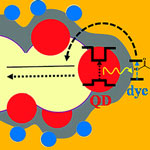 While the dye sensitized photovoltaic cell is a fairly mature design, researchers are still trying to improve its efficiency with various techniques, including structuring nanoporous electrodes to provide higher surface area and better charge transport, replacement of the liquid electrolyte by a solid one in order to prevent the electrolyte evaporation, and ways to widen the narrow absorption spectra of molecular dyes. In a standard DSSC, an organic molecule adsorbed on the surface of a porous electrode absorbs light and then initiates the charge separation process eventually leading to generation of photocurrent. One major difficulty in such cells is that very few dyes can absorb a broad spectral range, essentially covering the solar spectrum. In contrast, broad spectral coverage is an inherent property of semiconductor nanocrystals. The latter, however, turn out to do a rather lousy job in separating the charges. Researchers in Israel have now presented a new configuration for quantum dot sensitized DSSCs via a FRET process.
While the dye sensitized photovoltaic cell is a fairly mature design, researchers are still trying to improve its efficiency with various techniques, including structuring nanoporous electrodes to provide higher surface area and better charge transport, replacement of the liquid electrolyte by a solid one in order to prevent the electrolyte evaporation, and ways to widen the narrow absorption spectra of molecular dyes. In a standard DSSC, an organic molecule adsorbed on the surface of a porous electrode absorbs light and then initiates the charge separation process eventually leading to generation of photocurrent. One major difficulty in such cells is that very few dyes can absorb a broad spectral range, essentially covering the solar spectrum. In contrast, broad spectral coverage is an inherent property of semiconductor nanocrystals. The latter, however, turn out to do a rather lousy job in separating the charges. Researchers in Israel have now presented a new configuration for quantum dot sensitized DSSCs via a FRET process.
Feb 23rd, 2010
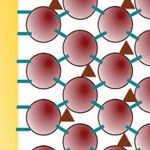 Solar-powered splitting of water promises an attractive, clean energy source and numerous research projects around the world are working on making this process sufficiently efficient - reducing the systems' cost and extending their lifetimes - to be able to compete with dirty carbon fuels on an industrial scale. Natural photosynthesis uses chlorophyll to absorbe visible light and many solar hydrogen cells are imitating this process by using light-sensitive organic dye molecules as light absorbers and then transfer the absorbed energy to a catalyst that reduces protons to hydrogen. Researchers in the UK have now shown that an inexpensive and environmentally benign inorganic light harvesting nanocrystal array can be combined with a low-cost electrocatalyst that contains abundant elements to fabricate an inexpensive and stable system for photoelectrochemical hydrogen production.
Solar-powered splitting of water promises an attractive, clean energy source and numerous research projects around the world are working on making this process sufficiently efficient - reducing the systems' cost and extending their lifetimes - to be able to compete with dirty carbon fuels on an industrial scale. Natural photosynthesis uses chlorophyll to absorbe visible light and many solar hydrogen cells are imitating this process by using light-sensitive organic dye molecules as light absorbers and then transfer the absorbed energy to a catalyst that reduces protons to hydrogen. Researchers in the UK have now shown that an inexpensive and environmentally benign inorganic light harvesting nanocrystal array can be combined with a low-cost electrocatalyst that contains abundant elements to fabricate an inexpensive and stable system for photoelectrochemical hydrogen production.
Feb 16th, 2010
 A key hurdle in realizing high-efficiency, cost-effective solar energy technology is the low efficiency of current power cells. In order to achieve maximum efficiency when converting solar power into electricity, ideally you need a solar panel that can absorb nearly every single photon of light - across the entire spectrum of sunlight and regardless of the sun's position in the sky. One way to achieve suppression of sunlight's reflection over a broad spectral range is by using nanotextured surfaces that form a graded transition of the refractive index from air to the substrate. Researchers in Finland have now demonstrated a scalable, high-throughput fabrication method for such non-reflecting nanostructured surfaces.
A key hurdle in realizing high-efficiency, cost-effective solar energy technology is the low efficiency of current power cells. In order to achieve maximum efficiency when converting solar power into electricity, ideally you need a solar panel that can absorb nearly every single photon of light - across the entire spectrum of sunlight and regardless of the sun's position in the sky. One way to achieve suppression of sunlight's reflection over a broad spectral range is by using nanotextured surfaces that form a graded transition of the refractive index from air to the substrate. Researchers in Finland have now demonstrated a scalable, high-throughput fabrication method for such non-reflecting nanostructured surfaces.
 Subscribe to our Nanotechnology Spotlight feed
Subscribe to our Nanotechnology Spotlight feed





